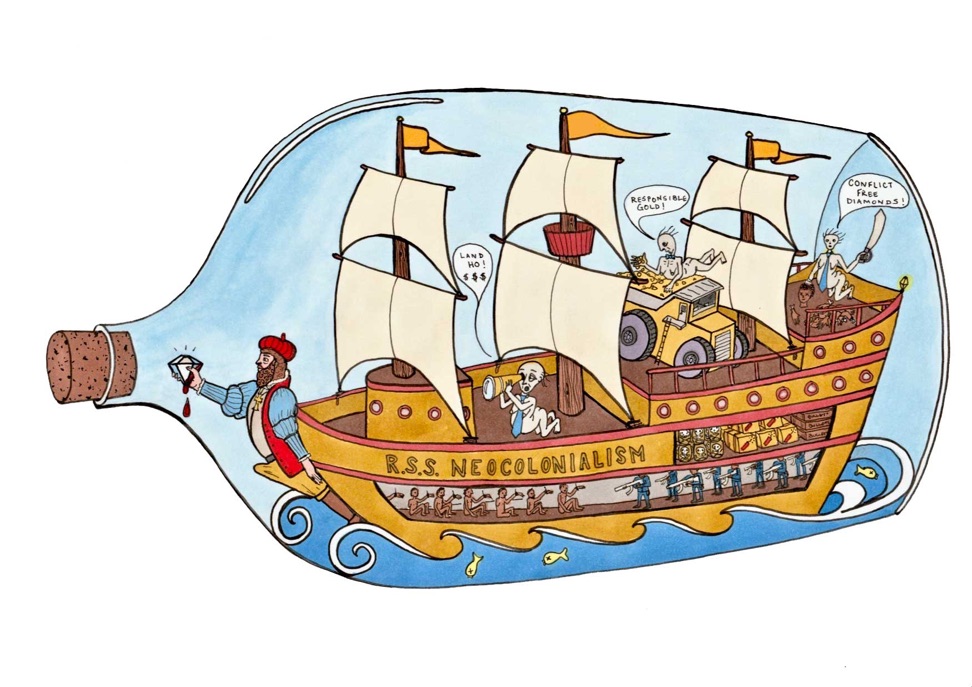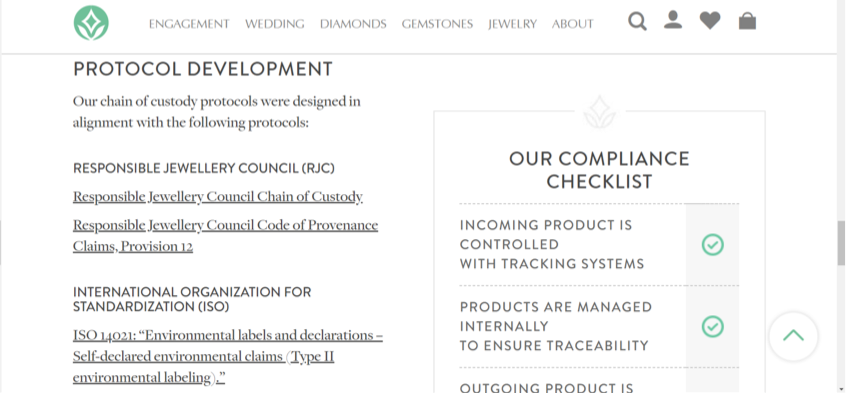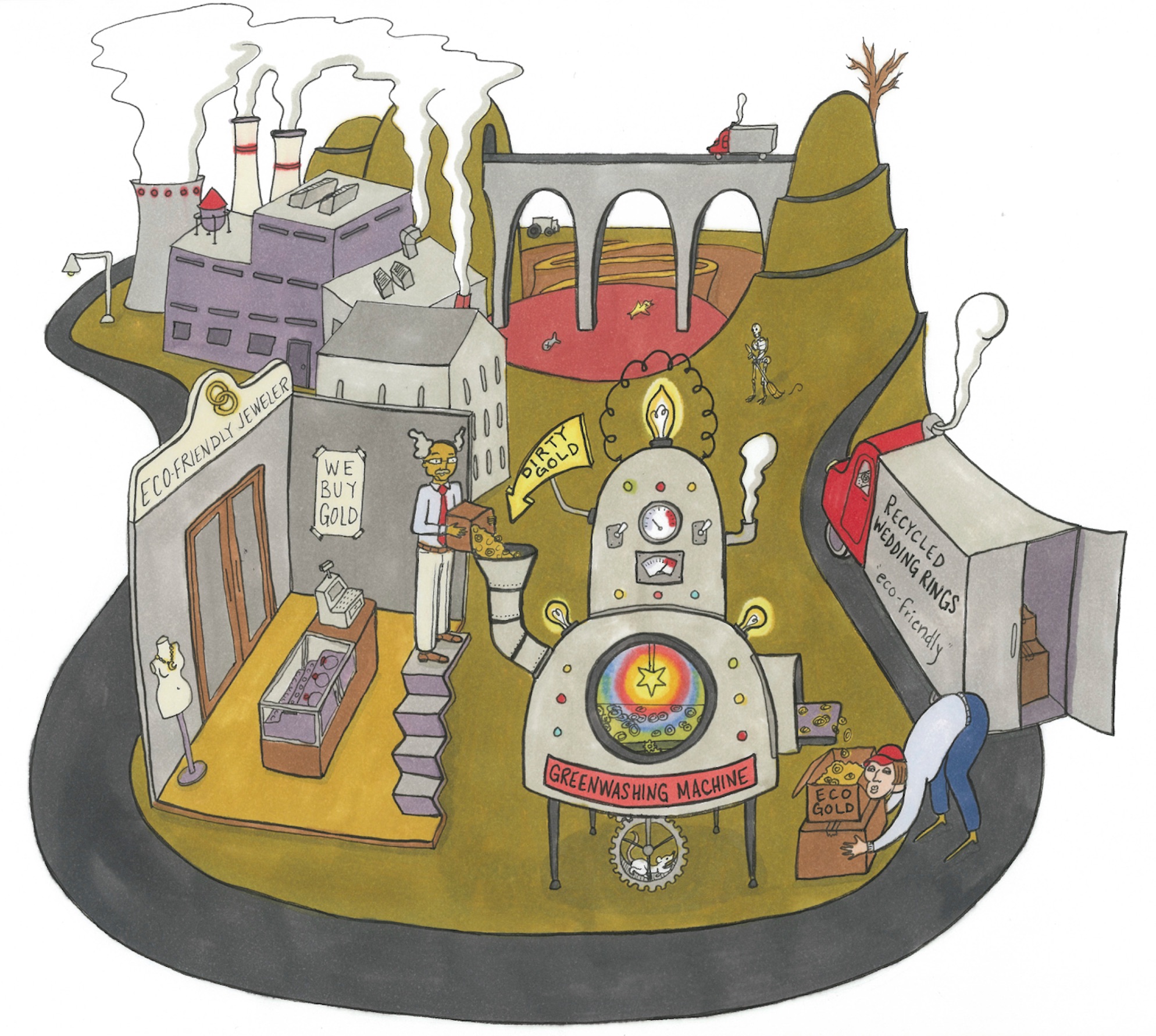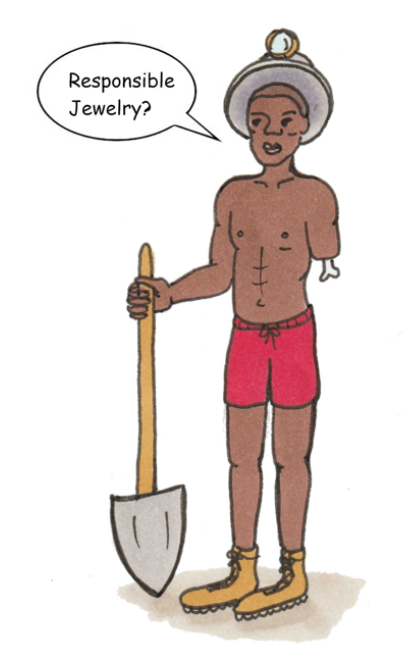
Executive Summary
“True compassion is more than flinging a coin to a beggar; it comes to see that an edifice which produces beggars needs restructuring.” —Dr. Martin Luther King, Jr.
An estimated 3.7 million people have died in wars funded by diamonds. Millions more around the world are being poisoned by mercury from gold mining, destroying the environment just so they can scrape by to survive in their destitute lives. All this is in the name of luxury products and love symbols.
Yet, these days, "ethical/responsible" jewelry is now the hot trend in the jewelry world. It's all over the trade magazines, and nearly every retail jeweler is trying to hop on the responsible bandwagon.
On the retail side, this “responsible/ethical jewelry” angle is powerfully marketed in North America by Brilliant Earth. Nearly every blogger, journalist or potential customer looking to learn about or purchase ethical jewelry goes through the Brilliant Earth gateway. Their website gets over a million visits a month, their social media presence is massive—and, as of the time of this writing, they have even opened up seven brick-and-mortar stores across the US.
Brilliant Earth have pioneered marketing to concerned consumers better than anyone else in the world. In fact, to a large degree, the ethical jewelry marketing and narrative in North America is owned by Brilliant Earth.
In context to their sourcing practices, they are in alignment with the rest of the jewelry trade, particularly the Responsible Jewellery Council (the Council), as shown by this screenshot off Brilliant Earth's website:

The Council was founded by 14 companies in 2004, among them Rio Tinto, De Beers, BHP Billiton, Cartier, Newmont Mining, Signet Group, Tiffany & Co, Zales Corp, and Jewelers of America. Their main function was to create a "responsible jewelry" standard. Over the last few years, this standard has become a forward-facing market narrative. In other words, retail jewelers become members of the Council and use their standards to show consumers that they are "responsible." Today, the Council has over 1100 members.
In fact, the responsible standard has been achieved without truth, reconciliation, or restitution to communities impacted by diamond-funded wars. Additionally, numerous indigenous communities around the world have had endured ecocide from large-scale gold mining practices. The same companies that funded the wars, including some of the companies listed as founders of the Council, have created and shaped the diamond market's current "conflict free" narrative and the new "responsible gold" supply chain.
One of the most important points in the Exposé is, if we are going to see real change, we need truth, reconciliation, and restitution. The opportunity to find our common humanity, face to face, the victim and victimizer, is transformative. It creates the possibility of a starting over place. Without that starting over place there is no real foundation for an ethical jewelry movement.
In fact, because there was never any accountability, and black African/Indigenous lives don't matter to the neocolonial multinationals, past crimes were buried. All previously mined material was officially "grandfathered" into the Responsible Jewellery Council's standards back in 2012.
The "responsible" supply chain was defined around supply chain transparenecy that large-scale mining companies already had in place! No change in practices was necessary.
The focus essentially became hiding previous atrocities and redefining ethics in order to maintain control of the new emerging ethical jewelry market.
Essentially, the North American responsible/ethical jewelry supply chain bypassed the producer communities, the communities that have been victums of wars and environmental atrocities—those most in need an ethical jewelry market to uplift them out of poverty.
To put it another way, one of the most profound metaphors for our time is the diamond engagement ring. Such an object represents love, fidelity, hope, and commitment for a beautiful life. Yet hundreds of thousands, perhaps millions of people are wearing these such rings that have funded millions of deaths and ecocide from global mining practices. Because there was no real starting over place, these days, such a ring now branded "ethical/responsible" has ZERO impact on those communities.
Such a ring merely fools the market into believing that they are part of the solution, when in fact they are merely supporting the same neocolonial practices that have resulted in so much misery.
This, a perverse "ethical jewelry narcissism," is particularly true in North America.
The Ethical/Responsible Jewelry Lies
The notion of "conflict free" perhaps is the biggest lie. It was created to hide crimes in plain sight. Think about it. The diamond sector funded wars that killed millions, and then those who were complicit suddenly turn a new leaf and become "conflict free." Of course, it is more complex than that, and we go into the details of how this happened in the Exposé.
These days, all jewelers use the term "conflict free" to assure concerned customers that they are providing "ethical" diamonds. The term is the keystone in the marketing of jewelry. In context to natural diamonds, Brilliant Earth, who markets themselves as "beyond conflict free," sources from large-scale multinationals just the same as other jewelers.
In context to precious metal sourcing, a bit of a back story is required. In 2007, using recycled metals was a radical innovation. It allowed pioneer jewelers, myself included, to at least raise awareness of gold mining issues. But jewelers knew that it really was not a great solution. Back in 2010, I was working with Fairtrade International, writing a business place to introduce Fairtrade Gold into the North American market. The use of Fairtrade Gold alleviates poverty and exploitation and reduces global mercury contamination among the 25 million small-scale gold miners. It was the solution.
Brilliant Earth had the opportunity to be a radical game changer by sourcing gold from small-scale miners. Even recent marketing expresses the their strong support of small-scale mining initiatives. For a while, they purchased Fairmined Gold. If they had followed through, they would have been radical game changers in the global supply chain. Instead, they base their ethical veracity in large part on recycled metals, which we view as a form of greenwashing.

This ethical = recycled story is now the story for jewelers in North America.
Obviously, this practice has no impact on the mining sector. Using recycled metals does not reduce mining because precious metals have market far beyond what's used in jewelry. More critical, particularly in the ethical jewelry context, is that the marketing of recycled metals to concerned consumers misdirects potential energy for positive change.
This process of making "eco-friendly," "earth-friendly," and "socially responsible" wedding rings is merely taking dirty gold from unknown sources and refining it to create (presto!) new "ethical" recycled gold.
Meanwhile, while Brilliant Earth has been creating an ethical jewelry narrative, the Responsible Jewellery Council has been hard at work creating additional standards. Their responsibilty claims are based on a chain of custody scheme that bypasses even the slightest acknowledgement of alleged complicity in past human rights and environmental atrocities. The materials sourced from the time before the standards are actually officially grandfathered in. The atrocities documented by watchdog groups are ignored. Crimes are hidden in plain sight.
Furthermore, though a former Responsible Jewellery Council CEO admitted that his organization was really a trade association, the Council presents itself to the world as a nonprofit organization. There’s an inherent conflict of interest when an organization heavily influenced by business interests—and legally obligated to protect its assets and drive profits to shareholders—is also determining the “responsible criteria” for its members.
A number of highly-regarded civil society watchdog groups and non-governmental organizations (NGOs) have asserted from the beginning that the Responsible Jewellery Council’s standards lack credibility. However, over the past ten years, these groups have had little ability to influence the Council on any on-the-ground issues related to human rights and environmental justice practices. The general lack of credibility in the Council's standards is a theme seen widely in Ethical Jewelry Exposé, particularly in the first several chapters.
Meanwhile, NGO collaborators working with the Responsible Jewellery Council have put forth fine initiatives to benefit producer communities, the tens of millions of small-scale miners whose lives are characterized by extreme poverty.
Unfortunately, because such initiatives are mere token efforts representing a minute fraction of total commerce, they are analogous to “flinging a coin to a beggar.” In context to the North American jewelry market, they have had no impact on the narratives which drive purchases in the market.
Yet the importance of these efforts is amplified by the jewelers, bloggers and trade press, as part of a new “responsible jewelry” story that makes concern for small producers central.
“Positive stories” serve as a cover-up for the modern-day continuation of an old story, a giant hungry neocolonial ghost with an insatiable appetite destroying cultural diversity and the collapsing fragments of ecology that sustains our life on earth.
Thus, the edifices which produce beggars remain in place, hidden by a new “responsible jewelry” narrative establishing itself in even the mainstream North American market.
Source Code Behind the Narratives
The Ethical Jewelry Exposé reveals the origins of the “responsible jewelry” or “ethical jewelry” market narrative by penetrating the frameworks of large- and small-scale mining, consumer-facing jewelry sales narratives, manufacturing issues, jewelry supply chains, the history of the ethical jewelry movement, retailer issues, and the roll of NGOs.
This complex web of interconnecting relationships is methodically disentangled through the metaphor of Russian nesting dolls, with eight layers of babble obscuring the nefarious truth hidden at the core.
The Exposé argues that the new and emerging “responsible jewelry” assertions by multinational mining companies and their retail partners do nothing to change the “edifice which produces beggars.”

The Exposé also asserts that any ethical or responsible jewelry practice at this stage must focus exclusively on improving the lot of small-scale miners, a global community of producers whose lives are characterized by exploitation and poverty.
Essentially, the people of the land must control and benefit from the resources of the land.
These small-scale mining communities should be supported with training in best practices and access to international markets, and be certified by third-party agencies independent of the influence of large-scale multinationals and their retail partners in the jewelry trade.
Waking the Energy for Change
Fortunately, we have a successful example of such a program for small-scale miners that deserves unmitigated support: Fairtrade Gold.
Fairtrade International, with its global stature and reputation, has the power to change markets. This has been demonstrated in the UK, where Fairtrade Gold was a major trend of 2017 and has shifted consumer perception of jewelry.
For a number of factors explored in the Exposé, Fairtrade Gold—and other ethically certified gold from small-scale miners—has failed to gain market share in North America. While there are over 250 fairrtade gold jewelers in the UK, in the US, there is only one: Reflective Jewelry.
Essentially, I have pioneered Fairtrade gold in the US since April, 2015. It's like being the first Fairtrade Coffee merchange 40 years ago, except no other jeweler in the US has joined. A explanation of why can be found in the supplementary article on Fairtrade/Fairmined Gold in the USA.
At present, there is great potential energy for change in Millennials, Gen Xers, and the broader market of green consumers. We simply need to activate that energy through new coalitions between jewelers, small-scale producer communities, and human rights, labor, and environmental organizations.
To find a new starting over place—one that puts our common humanity and our need to protect cultures and ecosystems at the center of our economic decisions— we need to have fertile ground. We have to disrupt the market by exposing how the current ethical jewelry narrative does nothing to change the edifices producing the beggar. As Justice Brandeis said, “Sunlight is said to be the best of disinfectants.”
Then, in North America, we need to create market support for a new ethical jewelry story based on benefit for certified small-scale producers, enabling consumers to purchase jewelry which aligns meaning and symbolism with sourcing.
If we can do this, we can vastly improve the lives and environment of millions of small-scale miners and their communities around the world.
A market based on Fairtrade Gold, once established, would create a virtuous momentum. Larger companies driven by bottom line practices, companies who are creating the current “responsible jewelry” narratives, will want to sell Fairtrade Gold—and other fair trade jewelry that creates benefit for small-scale producers—because they will see its certain profitability.
Continue on the Foreword: Birth of the Ethical Jewelry Movement
Return to the Landing Page
**All writing and images are open source, under Creative Commons 3.0. Any reproduction of this material must back link to the landing page, here. For high resolution images for publication, contact us at expose(AT)reflectivejewelry.com.**